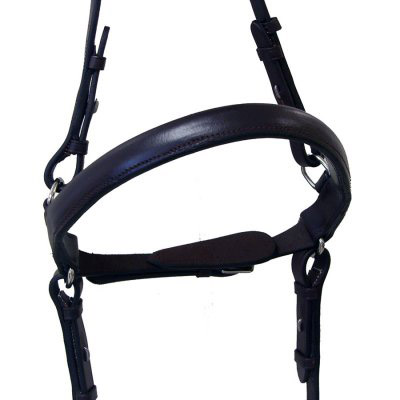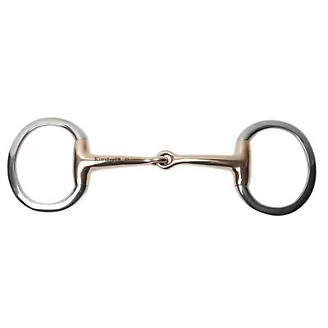The “addiction” thing reminded me of a few things. I swear some of these intelligent, sensitive, and almost emotional Iberians get a bit OCD or can develop self soothing behaviors because they can be stressy little internalizers, but also incredibly chill. It’s hard to explain. This might be discomfort and tension, but also partly a “tick” with him too. So you’ll have a physical and mental hurdle to overcome.
I agree with the notion that he’s backing out of the contact too though. Mine had the habit of wanting to hide behind the vertical, and training as well as the Fager bit, helped. That bit gives him something to put pressure into. I don’t want to say lean, because he’s not leaning exactly, but he’s putting some weight in my hands instead of none. In the double he puts the right amount of weight in my hands, is comfortable in the contact, and perhaps likes the type of communication offered by the double, especially for the 3rd level level up type work. I’m not saying to put yours in the double if it’s not right, but that he will get there and might not be as invasive with it as you think, but I don’t know. I do not believe that the curb made it look better for my horse or exacerbated the issue, and the trainers I ride with would (borderline brutally  ) point this out. However, mine did not have this tongue issue and improved in his snaffle as well prior to going to the double. Just wanted to clarify that I didn’t mean put the double on and it will be fine.
) point this out. However, mine did not have this tongue issue and improved in his snaffle as well prior to going to the double. Just wanted to clarify that I didn’t mean put the double on and it will be fine.
Mine does prefer the bit higher in his mouth and every time I’ve tried to put it lower, he clearly objects (with a few different bits). So there’s that too.
I also find that with these breeds they’ll do everything and anything for their rider, and are quite capable. So although they can and will do the work, they’re not always mentally ready. It can be easy to unintentionally overface them. I have no idea if you’re doing this since I don’t know you or the horse. I really feel as though Iberians are different, but if you’re working with a trainer who is familiar with them, that’s a huge plus. If you have a good natural feeling, that helps too.
I think it’s possible that you’ll have to go back to basics with this issue. It’s a basics issue that you don’t want to hinder you later. The horse has to be confident, consistent, and comfortable in the contact to succeed and progress correctly in his work. Would be interesting to hear updates/how toi ultimately overcome this issue, OP.










